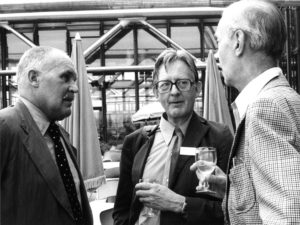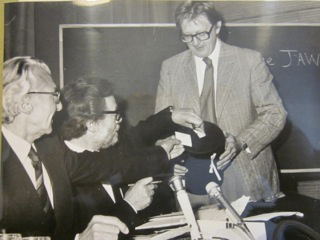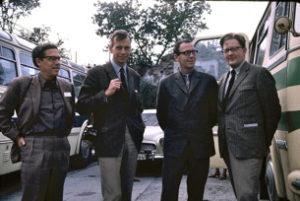
Sven Sandström, born in Stockholm in 1927, graduated from upper secondary school in Kristianstad in 1946. Like his childhood friend Ulf Trotzig, Sven dreamed of becoming an artist, but he set aside these aspirations at Lund University, and focused wholeheartedly on a career as an art historian. He studied under the legendary professor Ragnar Josephson and took his PhD in 1955 with a thesis on the French Symbolist Odilon Redon, leading to a position as associate professor in art history and art theory. Since then, he has incessantly worked as a researcher, teacher and writer, penning some 30 books and countless articles on art from both a scholarly and a popular perspective.
As a researcher, he specialised in the Renaissance, modern art, art psychology and art sociology, along with works of a more theoretical nature, such as Verkligheten är ett innanhav (Reality is an Inland Sea, 1987), Intuition och åskådlighet (Intuition and Perspicuity, 1996), and Explaining the Obvious (2007).
He has also published several anthologies and the art history periodical Aris (Art Research in Scandinavia), and contributed as an art expert to the entries on art in the The Swedish National Encyclopedia. In recent years he has somewhat surprisingly delved into Paleolithic art, claiming that previous research has concentrated too one-sidedly on the anthropological explanations for the enigmatic cave paintings, thereby diminishing the artistic urges and qualities they reveal.

In the 1960s and 70s, Sven came to be seen by many as the foremost innovator in art historical research in Sweden. He published a debate book, Konstforskning (Art Research) in 1965, and co-founded a documentary archive for modern art together with Oscar Reutersvärd, at the Department of Art History at Lund University. His energetic four-term seminar on modern art was combined with alternating exhibitions of contemporary art at Skånska konstmuseum in the university building in Lund, and evolved into a lively hotbed for many future museum directors, curators and critics.
He also initiated behaviourist-oriented research and classes in art sociology and art psychology, and started a research project with major funding from the HSFR on public art in 1976, which continued for several years, with a final report published in Aris in 1978-79 (printed in 1981). In time for his 50th birthday in 1977, he was appointed professor of art history specialising in contemporary art life and environment, a position he kept until his retirement in 1993, when he was celebrated by his many colleagues and students with a Festschrift.

Sven is also noteworthy for his fervent interest in art criticism and its history. Alongside his studies in art history, he was an art critic for the newspaper Arbetet and later reviewed books sporadically for Dagens Nyheter. In 1960, he took over after Sten Karling as the chairman of the Swedish Art Critics Association, and in 1969 he and Folke Edwards organised the first AICA congress in Scandinavia (Copenhagen, Stockholm, Oslo). The preceding year, he had published the anthology Konstkritik I-II, and he was also vice president of AICA in 1970-73, alongside his chairmanship of the Association.
I especially recall how Sven, at the extensive ambulating AICA congress in Switzerland in 1978, moved like a fish in water among his international colleagues, impressing them with his command of French, which was the dominating language within AICA at the time. In the 1970s, he was also involved in AICA’s documentation of modern and contemporary art, and was the editor of the AICARC bulletin.
Around 30 years ago, Sven moved from Lund to a new district in the old fishing village Viken in north-west Skåne, which has been his base camp since then. On 26 February, 2017, this modern Renaissance Man turned 90 years old.
Lund, February 2017
Jan Torsten Ahlstrand
(colleague and long-time friend)
Translation: Gabriella Berggren
